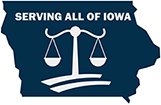A motorcycle accident can leave victims and their families reeling. Motorcyclists have considerably less protection compared to other drivers, which can leave them vulnerable to catastrophic injuries like head trauma, spinal cord injuries, road rash and fractures. They may face financial burdens and emotional damages as well.
To recover damages in an injury claim after a motorcycle accident in Iowa, you need to prove that the other driver was at fault. In the most basic terms, this means the other driver committed an act that breached the driver’s duty to drive in a safe, reasonable manner to prevent injury to others. The negligence must have led to the motorcycle accident.
How do I establish the other driver’s negligence?
Some drivers may not account for motorcyclists when changing lanes and driving in general. For example, a driver may not check for bikes when turning left. If a motorcycle is coming straight through the intersection, it can lead to a serious collision.
To prove that the other driver acted negligently, your case must present valid evidence. This can include a police report that indicates the cause and circumstances of the collision as well as any citations (like improper turn or speeding citations, for example) issued to either driver.
Other common types of evidence include photos of the scene and injuries, videos of the accident, eyewitness statements and even the damaged vehicles involved in the accident.
As you prepare for your case, make sure you or your loved one:
- keeps all medical appointments;
- contacts the insurance company; and
- keeps all documents and communications pertaining to the accident.
How do negligence and helmet laws in Iowa affect my case?
Iowa does not have a helmet law, so motorcyclists who did not wear a helmet are not in violation of any laws. However, failure to wear a helmet still may affect an injury claim in some cases. This is particularly true if the rider injured his or her head in the accident.
Iowa follows a modified comparative negligence system in which claimants or plaintiffs can recover damages, even if they are partially at fault, provided they are no more than 50 percent at fault for an accident. But damage awards are reduced by the individual’s percentage of fault.
So if a rider wasn’t wearing a helmet and suffered a head injury when another driver merged into his lane, the rider may be assigned a percentage of fault for the injury based on the decision not to wear a helmet. If 10 percent responsible, for example, and the rider suffered $50,000 in damages, the award is reduced to $45,000. However, this depends on the circumstances of the case and if the injury would have occurred regardless of helmet use.
Of course, helmet use won’t be a factor for a rider who suffers road rash on his leg because the helmet would not have protected the leg from the injury. Talk to your attorney about the details of the case to get a better understanding of how this can affect your case.
What types of damages might I recover in a motorcycle accident claim?
Economic damages in a motorcycle wreck can cover, but are not limited to, current and future loss of income and medical bills. Catastrophic injuries can require significant medical care in the future – such as home care for brain or spinal cord injury or additional surgeries – so it’s important to account for this when calculating losses.
Noneconomic damages are also recoverable. This may include pain and suffering, mental anguish, reduced quality of life and others.
Walker, Billingsley, & Bair provide Iowa Consumer’s Guide to Motorcycle Crashes to reveal popular myths and truths about motorcycle accidents and resultant claims. If you need help with your motorcycle accident claim in Iowa, call us at (888) 435-9886 for your FREE consultation.


